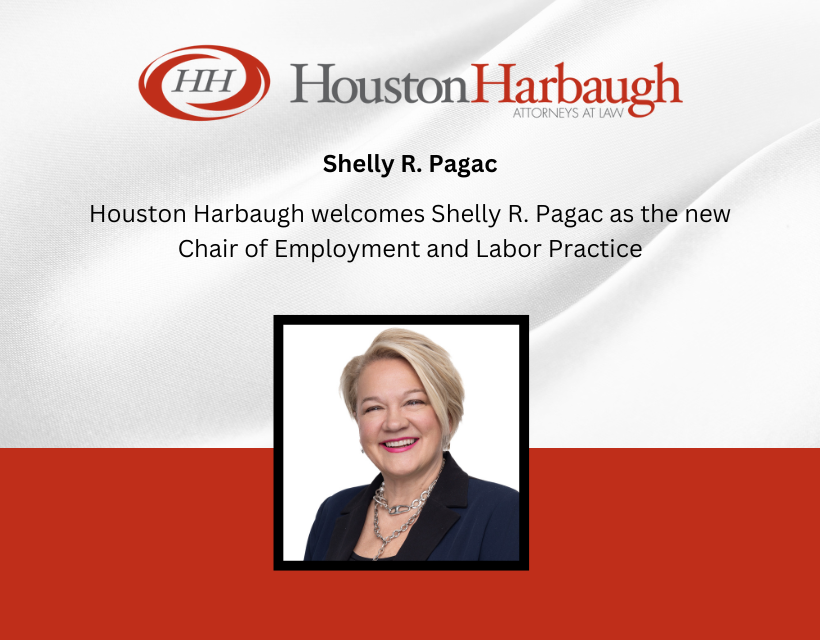PA Federal Business Decisions Volume 11, No. 1
By Bridget M. Gillespie and Henry M. Sneath, Business Decisions Editors [Originally published in the Winter 2006 edition of the Pennsylvania Bar Association’s Civil Litigation Update]
Computer Fraud and Abuse Act Claim Against Former Employee Provided Subject Matter Jurisdiction
In HUB Group, Inc. v. Clancy, 2006 U.S. Dist. LEXIS 2635 (E.D. Pa. 2006), an employer sued a former employee, alleging violations of the Computer Fraud and Abuse Act (18 U.S.C. sections 1030, et seq.), misappropriation of trade secrets, breach of contract, breach of fiduciary duty, conversion, tortious interference with an economic advantage and unfair competition. HUB also sought a preliminary injunction barring its former employee from contacting, soliciting or servicing 29 customers he had serviced during his last year of employment. The court found that it had subject matter jurisdiction under both diversity and federal question. In so holding, it rejected the defendant’s contention that the plaintiff’s claim under the Computer Fraud and Abuse Act did not meet the damage requirements of that statute. The court quoted the pertinent part of the statute:
Fraud and related activity in connection with computers:
(a) Whoever-
(4) knowingly and with intent to defraud, accesses a protected computer without authorization, or exceeds authorized access, and by means of such conduct furthers the intended fraud and obtains anything of value, unless the object of the fraud and the thing obtained consists only of the use of the computer and the value of such use is not more than $5,000 in any 1-year period;
(5)(A)(i) knowingly causes the transmission of a program, information, code, or command, and as a result of such conduct, intentionally causes damage without authorization, to a protected computer;
(ii) intentionally accesses a protected computer without authorization, and as a result of such conduct, recklessly causes damage; or
(iii) intentionally accesses a protected computer without authorization, and as a result of such conduct, causes damage; and
(B) by conduct described in clause (i), (ii), or (iii) of subparagraph (A), caused (or, in the case of an attempted offense, would, if completed, have caused-(i) loss to 1 or more persons during any 1-year period (and, for purposes of an investigation, prosecution, or other proceeding brought by the United States only, loss resulting from a related course of conduct affecting 1 or more other protected computers) aggregating at least $5,000 in value;
(e)(8) the term “damage” means any impairment to the integrity or availability of data, a program, a system, or information;
Id. at *7-10 (quoting 18 U.S.C. § 1030). The court held:
Clancy admitted that he took the information to use as a TTS employee. For purposes of federal question jurisdiction, Clancy exceeded the scope of his authorization into the database, thereby giving HUB the ability to plead a cause of action under the CFAA. Further, under the cases cited above, the damages alleged by HUB are of the type covered under the Act.
Id. at *11 (citations omitted).
In so holding, the court relied on several cases, including the Third Circuit’s recent opinion in P.C. Yonkers, Inc. v. Celebrations the Party and Seasonal Superstore, LLC, 428 F.3d 504 (3d Cir. 2005). There, after affirming the denial of a preliminary injunction, the Court wrote to clarify the meaning of the CFAA. The Court noted that the CFAA is primarily a criminal statute aimed at hackers, but provides private civil remedies in subsection g of the statute:
(g) Any person who suffers damage or loss by reason of a violation of this section may maintain a civil action against the violator to obtain compensatory damages and injunctive relief or other equitable relief. A civil action for a violation of this section may be brought only if the conduct involves 1 of the factors set forth in clause (i), (ii), (iii), (iv), or (v) of subsection (a)(5)(B). Damages for a violation involving only conduct described in subsection (a)(5)(B)(i) are limited to economic damages. No action may be brought under this subsection unless such action is begun within 2 years of the date of the act complained of or the date of the discovery of the damage. No action may be brought under this subsection for the negligent design or manufacture of computer hardware, computer software, or firmware.
Id. at 510-11 (quoting 18 U.S.C. § 1030(g)). The Court clarified that a civil cause of action is permitted; injunctive relief is an available remedy; compensatory damages of all types are available for all conduct other than violations of (a)(5)(B)(i) which are limited to economic compensatory damages; and relief may be had under any subsection as long as the claim involves one of the five enumerated results in § 1030(a)(5)(B)(i)-(v). Id. at 511-12.
Filing Bankruptcy Will Not Negate Arbitration Provision Absent Congressional Intent To Preclude Waiver of Judicial Remedies for Statutory Rights At Issue
The Court of Appeals for the Third Circuit has ruled that the test enunciated in Shearson/Am. Exp., Inc. v. McMahon, 482 U.S. 220 (1987), is the starting point for whether a bankruptcy court has discretion to deny enforcement of an applicable arbitration agreement, regardless of whether the proceeding is a core or non-core proceeding. In re Mintze, 2006 U.S. App. LEXIS 564 (3d Cir. 2006). The McMahon Court held that congressional intent must exist to preclude waiver of judicial remedies for statutory rights. This congressional intent can be established in one of three ways: “(1) the statute’s text, (2) the statute’s legislative history, or (3) ‘an inherent conflict between arbitration and the statute’s underlying purposes.’”Id. at *13. In Mintze, the debtor filed a complaint in bankruptcy court to enforce a pre-petition rescission of a loan agreement that had an arbitration provision. The lender moved to enforce the arbitration provision and both the bankruptcy court and district court refused to enforce the provision. The Third Circuit reversed because the debtor was not attempting to enforce statutory rights under the Bankruptcy Code, but was trying to enforce statutory rights under the Truth in Lending Act and other federal and state consumer protection laws. The Court held: “If arbitration is enforced in this case, we likewise cannot perceive of a sufficiently adverse effect on the underlying purposes of the Bankruptcy Code.” Id. at *20-21 (relying onHays & Co. v. Merrill Lynch Pierce, Fenner & Smith, Inc., 885 F.2d 1149 (3d Cir. 1989)).
Continuing Contract Doctrine Saves Breach of Contract Claim From Motion to Dismiss Based on Statute of Limitations
In Jodek Charitable Trust, R.A. v. Vertical Net Inc., 2006 U.S. Dist. LEXIS 2639 (E.D. Pa. 2006), the assignee of shareholders of a company, Tradeum, that merged with Vertical Net sued Vertical Net and others for breach of contract, promissory estoppel (mislabeled equitable estoppel), several torts and violation of the Uniform Commercial Code. The merger agreement and its amendments locked up certain amounts of merger shares until certain milestones and dates were reached. Jodek claimed that the defendants delayed on four separate occasions to take steps necessary for Jodek’s assignors to be able to sell their merger shares and the stock price dropped during those delays. The defendants moved to dismiss on several grounds.
Defendants contended that the statute of limitations barred Jodek’s claims for the first and second alleged delays because the complaint shows that they took place more than four years before the suit was filed. Jodek countered that the continuing contract doctrine makes its claims based on those delays timely. The court quoted from Thorpe v. Schoenbrun, 195 A.2d 870, 872 (Pa. Super. 1963), in stating the doctrine:
In general, the statute of limitations does not run against a contractual cause of action which is a continuous one. On a continuing contract which is entire, the statute of limitations begins to run only from the time when the breach occurs or the contract is in some way terminated. The test of continuity, so as to take the cause out of the operation of the statute of limitations, is to be determined by the answer to the question whether the services were performed under one continuous contract, whether express or implied, with no definite time fixed for payment, or were rendered under several separate contracts.
If services are rendered under an agreement which does not fix any certain time for payment or for the termination of the services, the contract will be treated as continuous, and the statute of limitations does not begin to run until the termination of the contractual relationship between the parties.
Id. at *15. The court held that whether this doctrine applied was a factual question and thus the contract claims could not be dismissed on the face of the pleading.
However, the court did grant other portions of the defendants’ motion to dismiss. Plaintiff’s claim for promissory estoppel (mistitled as equitable estoppel) was dismissed because such a claim is impermissible where a written contract supported by consideration governs the parties’ relationship. Id. at *23-24 (citations omitted). Plaintiff’s tort claims (breach of fiduciary duty, equitable fraud, negligence, negligent misrepresentation and negligent supervision) were dismissed on the basis of the gist of the action doctrine because all alleged duties were based on the contract, not as a matter of social policy. Id. at *26-27 (citations omitted). The court let stand the UCC claims because they are not tort based and thus the gist of the action and economic loss doctrines do not bar those claims; and, the six year catch-all statute of limitations applied and thus the claims were timely. Id. at *32-42. Finally, the court also struck the reference to a specific dollar amount in the plaintiff’s ad damnum clause because it could have complied with Local R. Civ. P. 5.1.1 by merely alleging that the amount in controversy exceeded the compulsory arbitration amount of $150,000, rather than pleading that it sought compensatory damages in excess of $60 million. Id. at *43-44.
Henry M. Sneath is a partner, and Bridget M. Gillespie is an associate, in the litigation firm Houston Harbaugh in Pittsburgh. They have extensive Federal and State court trial experience in cases involving commercial disputes, professional negligence, products liability, intellectual property and insurance coverage.








